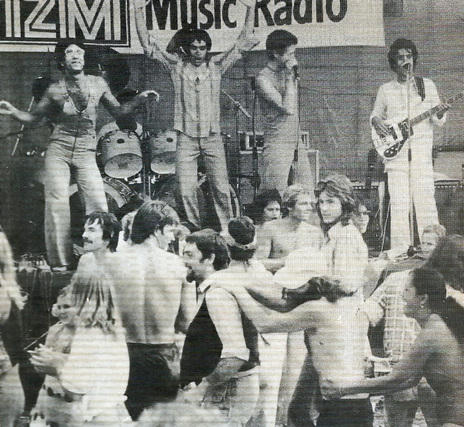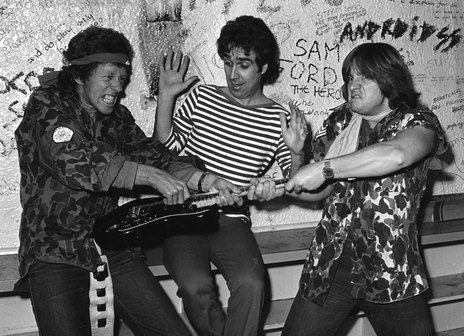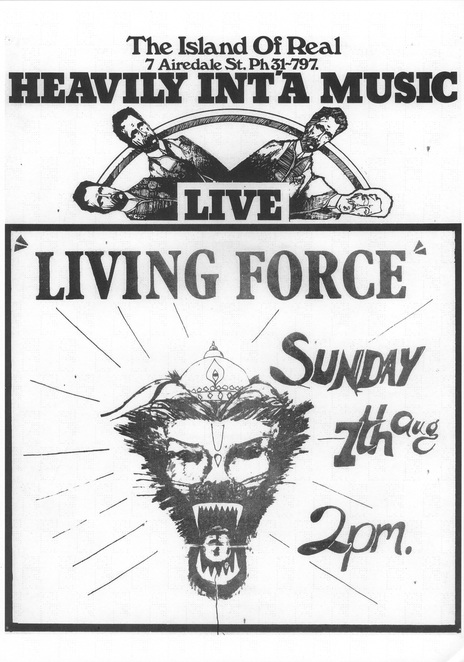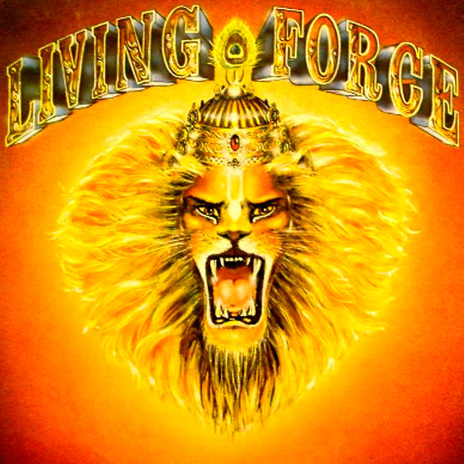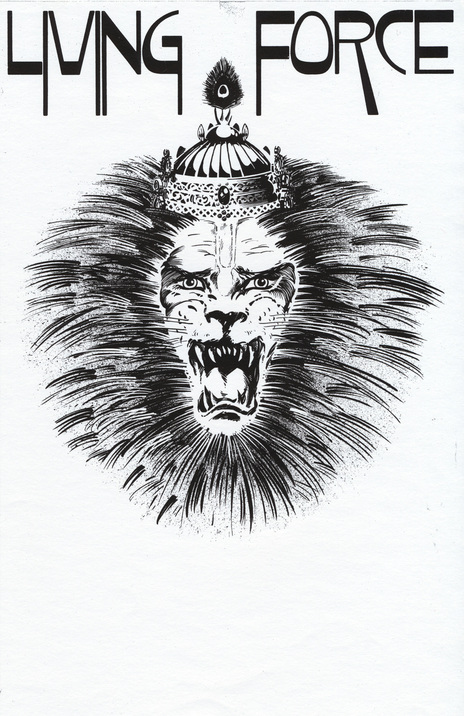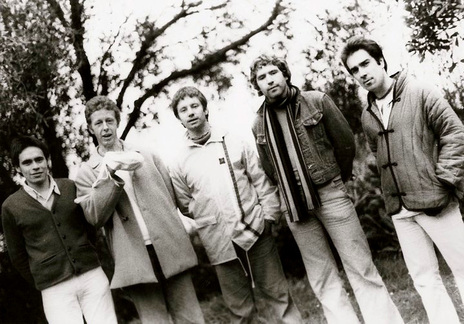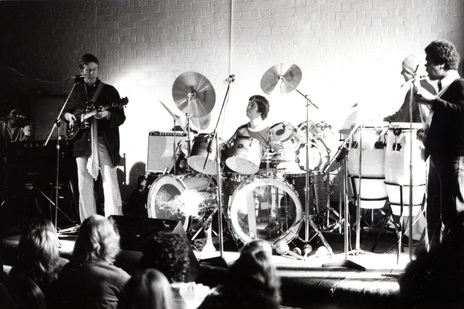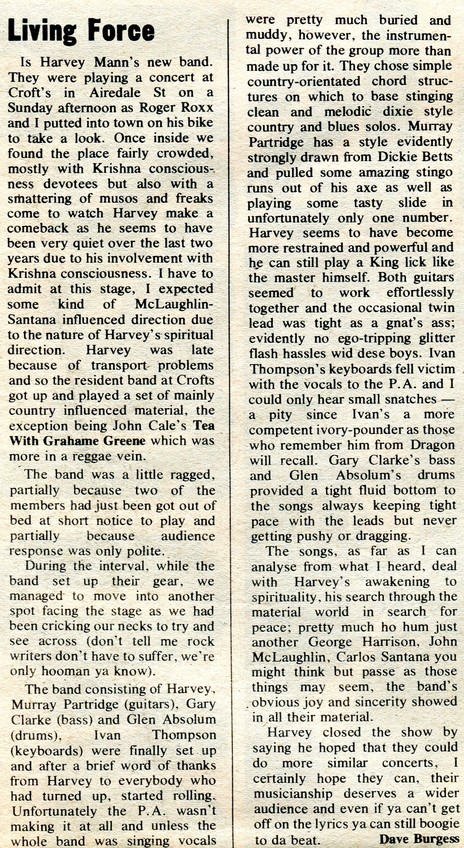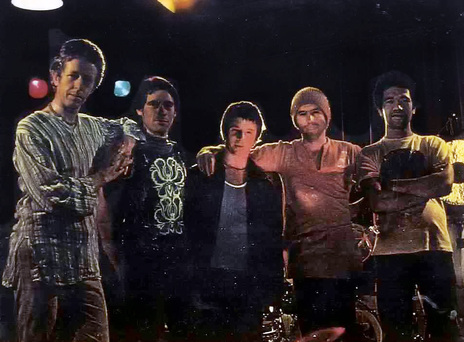Harvey Mann had discovered Krishna Consciousness, a movement that had mopped up the more frazzled edges of the hippie movement. His next project reflected this.
It’s not that Living Force lacked fire and passion, it’s just that Mann’s instrumental prowess was put at the service of Krishna, and eschewed the grit and sweat of rock and roll for something altogether more devotional.
When Living Force finally coalesced in 1975, they seemed a promising proposition, with another former Underdog/Space Farm alumnus, drummer Glen Absolum, in the line-up. Joining them were bassist Gary Clarke (formerly of Carson), keyboardist Ivan Thompson (formerly of Dragon), and guitarist Murray Partridge (formerly of Freshwater).
When it was announced in November that former Ticket guitarist Eddie Hansen had replaced Partridge, guitar fans were stoked. Fancy that: two of the best guitarists in the country, in the same band! Expectations were high.
Sadly, the group wasn’t well-received, and was subject to a high turnover in personnel, abortive projects and troubled gigs. An album, supposedly mostly completed in 1975 – with a deal from EMI – didn’t see the light of day until 1977, on WEA. The track listings give an idea of the material: ‘Maya Is Queen’, ‘Playing Around In The Endless Maya’, etc.
On a good day, the mellifluous, creamy notes produced by Mann and Hansen – sometimes in unison – over epic instrumental workouts could make for exhilarating listening. If you closed your eyes you could think you were hearing the dual guitars of John McLaughlin and Carlos Santana, as heard on their album Love Devotion Surrender.
at an infamous Radio Hauraki gig, they ended up getting the plug pulled.
But the Living Force songs reflected the group’s allegiance to the Krishna cause, and when they performed at an infamous Radio Hauraki gig at Albert Park, they ended up getting the plug pulled after presenting the 2000-strong audience with a half-hour of chants.
While that incident – reported in John Dix’s Stranded In Paradise New Zealand rock history – may be at least partly apocryphal, it helps to explain the rapid depletion of the group’s standing.
By 1976, when Roger Jarrett wrote about them in Hot Licks magazine, they seem to have decided on a more pragmatic tack, bizarrely claiming that “we’re a high energy rock and roll band.” But as Jarrett notes, “The band are more relaxed and have left the more overt religious aspects of their previous incarnations to the music, which is spiritual without losing any excitement or power. Eddie and Harvey’s guitar workouts have never been better, with each doing amazing things with feedback, controlled sustain and lightning runs up and down the fretboard.”
While the group continued in various permutations until 1979, the writing was on the wall as soon as New Zealand got wind of the howling, feral punk revolution fomenting in Britain.
Perhaps Dix summed up the prevalent attitude best in his caustic appraisal: “Replacing passion with precision, Living Force bored the tassles off all but the most terminal hippies. Long, drawn-out and mostly extraneous solos were the order of the day.”
While admirers of virtuoso guitarists may vehemently disagree, it’s certainly true that New Zealand lacked a sympathetic environment for this band of astral travellers, and the rest of our malnourished roster of progressive rock bands. In August 1977 they appeared at the national Students Arts Festival, held at Victoria University of Wellington, in a bizarre double-bill with proto-punks the Suburban Reptiles. The audience for Living Force was seated on the floor; by the time the Suburban Reptiles came on the vibe was as edgy as Altamont.
Living Force’s only releases were the self-titled album in 1977, which generated the single ‘Jaya’/’Matter Monster’. Halfway through recording the Living Force album, Eddie Hansen inexplicably left the group, only to return by November 1977.
In July 1978 the group flew to San Francisco to record with Santana engineer Glen Kalatkin. The resulting album never materialised. It’s rumoured that the group turned down a binding American record contract on ethical grounds.
From their American expedition, they brought back vocalist Mona Hollguin, but she soon returned to her home country.
Original member Glen Absolum left the band in 1978, and Harvey Mann jumped in February 1979. Living Force finally knocked it on the head at the end of that year.
In 1979 Mann teamed up with Absolum to form Appaloosa, but by 1980 there was another short-lived group called The Survivors “whose members are all ex-Living Force”, wrote the Auckland Star.
By 1980 The Survivors – Mann, Absolum and Eddie Hansen – were playing as The Spys, a new wave band with cropped blond hair. They released two singles, 'Daddy Was A DJ' on Ripper Records, and 'Plastic Love' on RCA. Then, in 1981, they toured China, claiming – truthfully – to be the first Western rock act to do so, predating Wham! by some four years.
Mann still plays guitar and performs mostly on Australia’s Gold Coast, sometimes with Eddie Hansen in a Krishna-inspired group called Mantra. In 2012 Hansen reformed Ticket – a group that has been called “New Zealand’s ultimate acid band” – and toured New Zealand.
